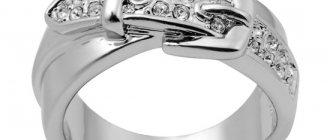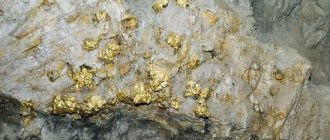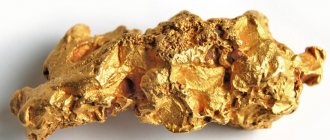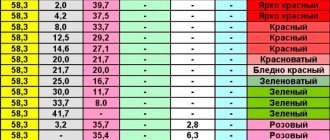Gold in antiquity
Archaeologists around the world still cannot say the year when gold was discovered . Scientists can only speculate about this period. The gold itself and jewelry were found in various places. For example, remnants of the valuable metal were discovered in caves inhabited by people 50,000 years ago. Scientists say that this precious material became most popular in China, India and Egypt. Moreover, most of them believe that the first who mined the first solar metal were the inhabitants of Egypt.
More than 4,000 years ago, the Egyptians became the first to establish gold mining and processing. However, at first the monetary unit in Egypt was barley, and only after some time did gold become equal to money.
By the 7th century before modern times, Egypt possessed more than 3,000 tons of gold, but during the war with the Assyrians it passed to them. About 50 years later it ended up in Babylon, where reserves were increased to 5,000 tons. Egyptian gold began to move from state to state, and its mining was practically stopped.
Gold (English Gold, French Or, German Gold) is one of the seven metals of antiquity. It is usually believed that gold was the first metal with which man became acquainted back in the Stone Age due to its distribution in a native state. The special properties of gold - heaviness, shine, non-oxidation, malleability, ductility - explain why it began to be used from ancient times, mainly for the manufacture of jewelry and partly for weapons. Gold objects for various purposes were found by archaeologists in cultural layers dating back to the 4th and even 5th millennium BC, i.e. to the Neolithic era. In the III and II millennia BC. e. gold was already widespread in Egypt, Mesopotamia, India, China; from ancient times it was known as a precious metal to the peoples of the American and European continents. The gold from which the most ancient jewelry is made is impure; it contains significant impurities of silver, copper and other metals. Only in the VI century. BC e. Almost pure gold (99.8%) appeared in Egypt. During the era of the Middle Kingdom, the development of Nubian gold deposits began (Nubia, or Ethiopia of antiquity). This is where the ancient Egyptian name for gold came from - Nub. In Mesopotamia, gold mining was carried out on a large scale already in the 2nd millennium BC. e. The Babylonian name for gold - hure - shu (hurasu) has a vague resemblance to the ancient Greek word (chrysos), which is found in all the most ancient literary monuments. Perhaps this word comes from the name of the area where gold could come from. The ancient Indian word ayas (gold) was later used in other languages to denote copper, perhaps indicating the prevalence of counterfeit gold in antiquity. Since ancient times, gold has been compared with the sun, called the solar metal or simply the sun (Sol). In Egyptian Hellenistic literature and among alchemists, the symbol of gold is a circle with a dot in the middle, i.e. the same as the symbol of the sun. Sometimes in Greek alchemical literature there is a symbol in the form of a circle with an image of a ray associated with it.
Gold, as the most precious metal, has long served as an exchange equivalent in trade, and therefore methods for producing gold-like alloys based on copper arose. These methods became widely developed and widespread and served as the basis for the emergence of alchemy. The main goal of alchemists was to find ways to transform (transmutate) base metals into gold and silver. European alchemists, following in the footsteps of the Arab ones, developed the theory of “perfect” or even “superperfect” gold, the addition of which to a base metal turns the latter into gold. In alchemical literature there are many names for gold, usually encrypted: zaras, tricor, salt, sun, sonir, secur, senior, etc. Some of them have Arabic origin, for example al-bahag (joy), hiti (cat droppings), ras (head, principle), su'a (ray), diya (light), alam (peace).
The Latin (Etruscan) name for gold is Aurum, ancient ausom, meaning “yellow”. This word compares well with the ancient Roman aurora or ausosa (morning dawn, eastern country, east). According to Schroeder, the word gold among the peoples of Central Europe also means yellow: in the ancient Germanic language - gulth, gelo, gelva, in Lithuanian - geltas, in Slavic - gold, in Finnish - kulda. Among some Siberian peoples, gold is called altun, among the ancient Persians - zarania (or zar), which is compared with the ancient Indian hyrania (more often, however, related to silver) and the ancient Greek (heaven). The Armenian name for gold, oski, stands out. Slavic gold, or gold, used since ancient times, is undoubtedly connected (contrary to Schroeder) with the ancient Indo-European Sol (sun), probably in the same way as the Central European Gold (gelb) with the Greek (sun).
Such a variety of names for gold indicates the widespread familiarity with it of various ancient peoples and tribes and the intersection of different tribal names. Derivative names for gold compounds currently in use come from the Latin aurum, Russian “gold” and Greek.
Middle Ages and modern times
After the collapse of Rome, all gold reserves were scattered throughout the world, which began to live on these jewels. For about 10 centuries, metal mining was practically not carried out and amounted to only about 3,000 kilograms per year.
By the end of the 15th century, people again began to look for gold deposits, as reserves were no longer sufficient. After the discovery of America, several thousand kilograms of solar metal were exported to European countries over the course of a quarter of a century, and over 200 years the weight of the transported precious metal amounted to more than 2,500,000 kilograms.
, many countries, including Russia, began to actively explore the discovery of gold In most cases, the discovery of new continents occurred thanks to this precious metal. Gold served as the beginning of the discovery and development of new lands and continents.
The most precious gift to humanity was kept in the South American Republic, where gold accumulations weighing more than 65,000 tons were found more than 100 years ago. Most of the solar metal has already been mined in South Africa, but still an average of about 500,000 kilograms of gold per year is still mined from this deposit.
Emergence of the gold standard
The gold standard is a financial system in which the value of money is expressed in a certain amount of gold. This system replaced the silver standard. In addition, along with gold, there is also a bimetallic standard, which shows the ratio of gold to silver. The main rule of the gold standard was the right to quickly and easily exchange paper money for gold. Thanks to this, financial market inflation would disappear. The owner of this bill had gold equivalent to one hundred dollars.
The first mention of this system dates back to 1821 in England. That is why the pound remained the world currency until 1914. During the Bretton Woods Conference, the gold standard was legalized. The United States abandoned the gold standard system in 1971, and the system has not been used since the Jamaica Conference.
Due to the current crises, economic experts have often raised the issue of returning to the gold standard. But the amount of precious metal is too small to fully ensure the circulation of money. The main advantages of choosing gold as a universal currency were:
- durability, the invariability of its properties over time;
- high price;
- good divisibility;
- ability to identify all noble metals.
The reasons why people began to abandon the use of gold as currency:
- impossibility of quick and easy emission;
- heavy transportation of large amounts;
- loss of gold.
There were three types of gold standard:
- Gold coin standard.
The classic gold standard, which was observed in countries that used coins made of gold, as well as paper money. Any type of money could be exchanged for an equivalent in the form of gold in any form. - Gold bullion standard.
Due to the discrepancy between the amount of gold and the total mass of paper money, the gold coin standard disappeared. Therefore, it was established that money can only be exchanged for bullion (minimum weight 12.5 kg). Therefore, many poor people could not exchange their reserves for gold. - Gold and exchange standard.
This standard is also called the gold exchange standard. It takes into account all the nuances of the gold bullion standard in the current international situation. This standard was the basis of the Bretton Woods monetary system.
Table element - gold
Aurum - gold - is one of the elements of the famous table of chemical elements, part of the group of metals. It is very resistant to various aggressive influences. Oxygen has absolutely no effect on this solar metal, so it does not oxidize. This metal is not exposed to various acids if the exposure occurs by one type. At a temperature of +25℃, the metal can dissolve in a mixture of nitric and sulfuric acid. Gold is also quite susceptible to the action of iodine and potassium salt.
The history of Zlatnik
For the first time in modern history, a copy appears in 1796, when a Kiev soldier sold one to a collector. At that time, no one knew the name of the coin, which was passed on for years as a relic. At first it was mistaken for Byzantine gold of those times. After 19 years, it was resold to another private collection, but is then considered lost. The surviving plaster casts forced numismatists to reconsider their attitude to the history of money circulation in Rus'. Previously, it was believed that their own money was not minted in those days, and the country made do with coins brought from Byzantium, Arab and European countries.
Zlatnik bears the image of Vladimir, the ruling prince. Some numismatists agree that the coinage was produced not for the needs of the state, but to demonstrate the significance of Rus'. On the other hand, the found specimens bear traces of handling. Therefore, we can say that despite the modest circulation, Zlatnik was used for rituals or awards. To date, the existence of 11 gold coins of Vladimir is known, 10 were divided between the Russian and Ukrainian museums, and one of the Russian gold coins is probably in a private collection.
Healing properties
Even in ancient times, people were convinced that solar metal had healing properties.
- Affects the human nervous system.
- Relieves inflammatory processes.
- Relieves allergic reactions.
- Increases brain activity and endurance.
- Improves memory.
- Improves mood.
- Protects from the evil eye and evil slander.
- Eliminates stress.
Moreover, to get rid of ailments, it is enough to simply wear gold jewelry constantly. Even ancient people believed that gold perfectly prolongs the life of its owner.
Characteristics of Zlatnik Vladimir
Presumably, the minting of Zlatnik dates back to the 10th-11th centuries. The circulation cannot be determined. Diameter: 19 – 24 mm. Weight: 4 – 4.4 g. On the front part (obverse) there is an image of Christ with the Gospel and the inscription in a circle “Jesus Christ”. In the center of the reverse is a chest-to-chest image of Prince Vladimir, in his right hand he holds a cross, and his left on his chest. On the right side of the disk there is a trident. Also on the reverse there is an inscription in Old Russian, which reads - Vladimir is on the throne.
The average weight is 4.2 grams, which became the basis for the Russian weight unit - the spool. The emergence of their own money contributed to the strengthening of relations with Byzantium, especially in terms of trade.
The original version of the name of the coin, which became the first Russian gold coin, differs from the modern one. Previously they used the name - Kunami, Zlatom, Zolotniki. In 1988, in honor of the 1000th anniversary of the first gold coin, the USSR issued a commemorative gold coin with a face value of 100 rubles.
Nature and gold
Unfortunately, gold is not widely distributed on planet Earth, so it has a high value. In the outer earth's crust its content is approximately 4.3·10-7%, and in a liter of water its content is 4·10-9 grams. Also, a small amount of solar metal is present in the soil and feeds the plants.
The method of extracting gold is considered a very labor-intensive process, so at all times it had a fairly high price. Geologists say that gold is a lonely metal, because very often it is found in its pure form.
Gold reserves of countries around the world
The gold reserve is the stock of gold, which is in the power of the Central Bank of a certain country and is a certain part of the gold and foreign exchange reserve. To date, the amount of gold mined is 174,100 tons. According to the World Gold Council, the volume of gold reserves by country is 30,000 tons. In the table below you can compare gold reserves of different countries of the world (relevance as of June 2014):
| # | a country | gold reserves, tons |
| 1 | USA | 8 133,5 |
| 2 | Germany | 3 384,2 |
| 3 | International Monetary Fund (IMF) | 2 814 |
| 4 | Italy | 2 451,8 |
| 5 | France | 2 435,4 |
| 6 | Russia | 1 112,5 |
| 7 | China | 1 054,1 |
| 8 | Switzerland | 1 040 |
| 9 | Japan | 765,2 |
| 10 | Netherlands | 612,5 |
| 11 | India | 557,7 |
| 12 | Türkiye | 512,9 |
| 13 | European Central Bank (ECB) | 501,4 |
| 14 | Taiwan | 423,6 |
| 15 | Portugal | 382,5 |
| 16 | Venezuela | 367,6 |
| 17 | Saudi Arabia | 322,9 |
| 18 | Great Britain | 310,3 |
| 19 | Lebanon | 286,8 |
| 20 | Spain | 281,6 |
| 21 | Austria | 280 |
| 22 | Belgium | 227,4 |
| 23 | Philippines | 194,3 |
| 24 | Algeria | 173,6 |
| 25 | Kazakhstan | 155,8 |
| 26 | Thailand | 152,4 |
| 27 | Singapore | 127,4 |
| 28 | Sweden | 125,7 |
| 29 | South Africa | 125,1 |
| 30 | Mexico | 123,3 |
The USA takes first place. It was gold bars in this country that became a substitute for the dollar, after its role as a reserve currency decreased. Thus, gold sales in the United States may help reduce pressure from buyers of precious metals.
Germany is in second place. In the period 2003-2008. It was this country that occupied a leading position in the sale of gold. But these sales did not in any way reduce the country’s own gold and foreign exchange reserves. Therefore, Germany will continue to sell this metal without harming the economy.
Italy is in fourth place. Since this country now has large debts, it can be assumed that in the near future it will begin to actively sell its gold reserves.
In sixth place is Russia. Over the past six years, Russia has doubled its gold reserves - from 520 tons in 2009 to 1,100 tons by mid-2014. Active replenishment of reserves began immediately after the 2008 crisis. Apparently, the Russian government does not rule out repeated crises in subsequent years and is stocking up on a liquid asset that has value under any circumstances.
Next comes China. The population of this country is large and the economy is developing rapidly. Between 2003 and 2009 China purchased about 450 tons of gold and about 200 tons in 2010. The country is actively converting its reserves into gold.
Switzerland is actively opposing the increase in the exchange rate of the Swiss franc. Therefore, the country is selling gold; there is no point in increasing reserves.











